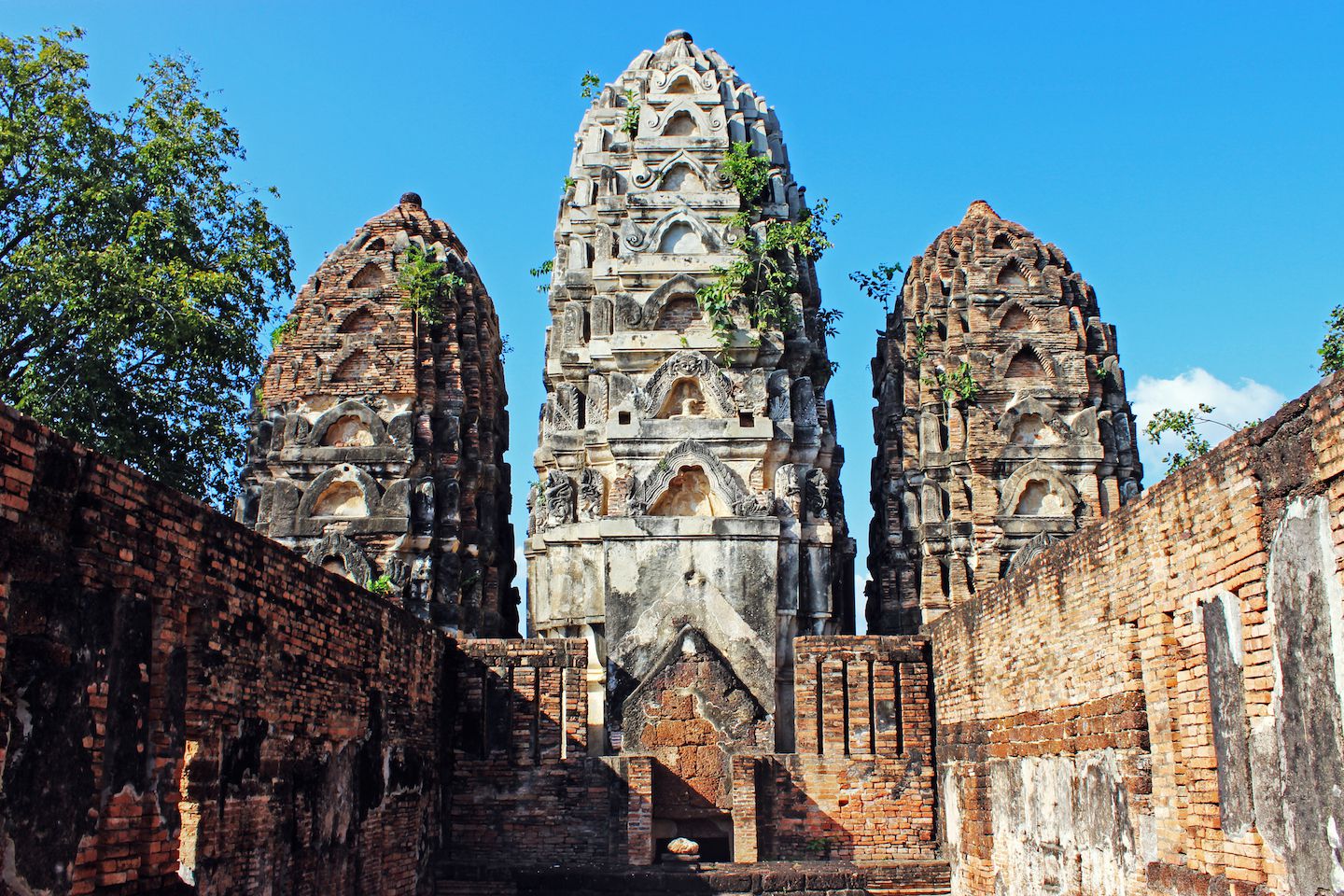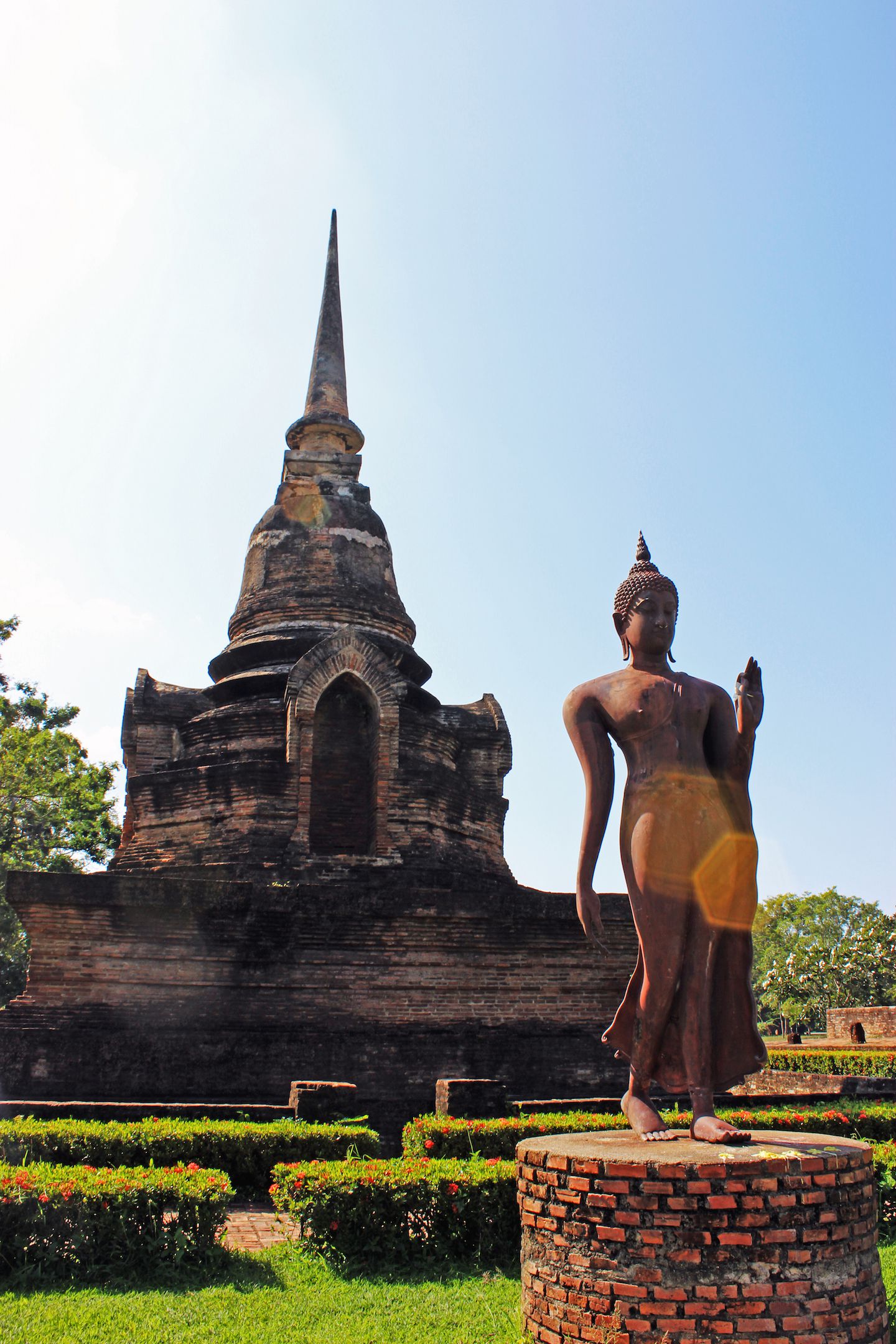From the old capital of Ayutthaya, we headed north to Thailand’s first capital, Sukhothai. Known for its historical park with classical Thai-style temple ruins, the Old Sukhothai city was some 13 km west of the New Sukhothai city, which is where most people live nowadays. This meant we had to commute to Old Sukhothai for sightseeing. An interesting means of transportation introduced here was the songthaew, an informal method of public transportation. Locals convert their pickup trucks into what could be described as a “shared” taxi.

It was a fairly convenient way to get around town (especially commuting from new to old Sukhothai) and pretty cheap, too.
Sukhothai Historical Park
Everyone who comes to Sukhothai must pay a visit to the Sukhothai Historical Park to appreciate the ruins of the old temples. The entire park was very well kept, with decent roads and no signs of waste anywhere on the grass or around the temples.

The park was big enough to be divided into several zones. We explored only the central zone, which contained the most important temples.
Wat Sa Si
The way leading to Wat Sa Si was very photogenic – a large moat with water lilies floating on the water surface preceded the ruins and the big sitting Buddha statue with a column hall. We spent quite some time there, sitting under the shade to avoid the unbearably hot sun and admiring the view.

There were two main chedis at Wat Sa Si. A smaller one with a walking Buddha statue was in front plus a bigger one that supposedly served as a tomb for King Li Thai.

Wat Si Sawan
Wat Si Sawan looked like a classic Khmer-style temple, with three characteristic ogival Angkor Wat-y towers, representing the Hindu trinity of gods. However, the entrance to the temple was surrounded by round laterite stone columns – this was not typical of Khmer temples. Wat Si Sawan was built mainly with bricks using mortar and some sort of stucco.

There wasn’t much to see within the small temple, but the towers were very distinctive even from afar. If anything, the best photos we took were from the back of the temple, across the large green field.

Wat Mahathat
The most important and impressive temple in the park, Wat Mahathat was the main temple of the Sukhothai kingdom. Yes, it has the same name as the Wat Mahathat in Ayutthaya, but that is a common name used to refer to important Buddhist temples in Thailand.
This one in Sukhothai had several stupas, with increasing importance from the outside to the inside of the temple. The shape of the stupas was based on a lotus bud, which characterized the Sukhothai architectural style.

Two of the stupas housed 9m Buddha statues that made me feel small in comparison. Other parts of Wat Mahathat were mostly in ruins.

Wat Mahathat concluded our visit to Sukhothai Historical Park. We really liked the park because it was a concentrated area of attractions that were well-organized. That meant no tuk-tuk drivers to deal with, no way to get lost, no multiple tickets to buy and no need to plan our own best route and itinerary. From here we head to Chiang Mai, where we look forward to staying for an extended time (2 weeks!).
For more pictures from Sukhothai, please visit the gallery!
